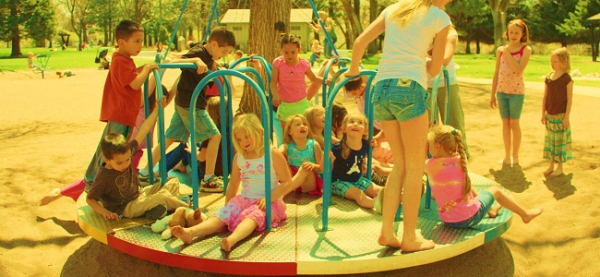Look beyond their behaviour
In my experience, the behaviour a young person displays doesn't always tell us the whole picture about what’s going on. Imagine a 12 year old smoker. If we just look at the behaviour, the risk, on the face of it, is addiction and damage to their health. But if we look beyond the behaviour, the risk expands; where is a 12 year old obtaining cigarettes? Their family? Older peers in their community?
"We need to provide the right support for the right child at the right time."
We can’t just offer an information-based intervention on the risks of smoking or smoking cessation, and expect a positive outcome, looking beyond the behaviour is a must. Maybe the young person also needs sessions related to decision-making, risk-taking, power imbalances in peer relationships and consent for instance.
Don’t just focus on information
Let’s continue with using smoking as an example. Chances are, most young people in school already know the risks and effects of smoking. In my experience, by age 12 most young people have a pretty well-developed understanding of the risks and effects related to a broad range of behaviours. They certainly know the risks posed by smoking – so why do they start? If you know that smoking is terrible for your health, is likely to kill you and leads to addiction, yet you start to smoke, it’s probable that something other than knowledge is driving your behaviour.
Focus on the drivers behind behaviour
The reasons why young people engage in behaviours which affect their health and wellbeing are complex. We survey thousands of young people each year and they tell us that the main reason they engage in risk-taking behaviours has very little to do with not having enough information on risks and consequences. Interestingly, they recognise that peers are probably the biggest driver of risk taking behaviour. That makes perfect sense - just ask yourself:
Do young people smoke, drink or take drugs for the first time on their own?
"Take-away’ skills can help young people boost their confidence and self-efficacy."
However, we are not talking about the classic view of ‘peer pressure’, where young people are ‘forced’ into smoking, drinking or taking drugs, Indeed, the reality is much more subtle. Our peers influence us all, positively and negatively and it is this influence which young people recognise as having such a strong impact on behaviour.
I am sure that we’ve all said ‘oh go one, one more drink’ at the pub with friends, when we’ve really just wanted to go home. Our priority at that moment was prolonging the evening, not the consequences of that decision. It's the same for young people. If your priority is hanging out with older peers in your community who all smoke and they offer you a cigarette, would your knowledge of the risks stop you from doing it?
Talking to your learners will help you to find out what they believe the main reasons are that they and their peers make decisions that negatively impact on their health and wellbeing.
Show – don't tell
Wherever possible, show young people - don’t tell them. When educating, try to include activities and scenarios that offer opportunities for young people to experience the subject being discussed.
For example, if the focus is decision-making, create a scenario to show young people what happens when a group makes a decision. You can do this by putting young people in small groups, setting a task and seeing what happens. Inevitably someone will take charge and make decisions, some will just go along with it, others will believe they contributed to decision-making but didn't and so on.
This approach can ‘show’ young people what can happen in groups and how this can lead to a group making a decision which none of the members would do individually, also known as ‘groupthink’.
You then have the perfect opportunity to discuss the implications in their own lives, if they have experienced it, what the consequences might be and advise on practical strategies to manage. This approach means young people leave with a practical and realistic example of the subject being discussed, have a better chance of recognising it happening and have better skills to mitigate the impact.
The three Rs
For any work to be truly effective, we need to provide the:
Right Support
for the
Right Child
at the
Right Time
This approach functions at several levels. For universal programmes it’s about ensuring that the work we deliver is appropriate for the age of the young people and their stage of cognitive development. When we deliver more targeted work with young people we should be thinking about what is it they actually need and what is going to be most effective.
Use the available evidence and best practice to determine what you deliver. Think about how you identify young people who need support; do you have a coherent strategy and approach for this?
Find out what they think and what they do
Whenever possible, conduct some kind of survey or screening before embarking on any intervention project, scheme of work or even one-off session. Finding out as much as you can about actual behaviour before delivering any work related to health and wellbeing will hugely improve its quality, content and impact.
This information provides an excellent starting point for young people in relation to ‘where they are’. Surveys targeted to young people within schools are an easy win to gather information. Your school may already have a Mailchimp account (or similar) and you can design excellent surveys for free using Google Forms.
Key questions to think about include:
- How many of the young people at your school actually engage in a given behaviour?
- What is their perception of these same behaviours?
- What are the key issues to them?
- What do they think about certain behaviours?
- What do they think about the support and sessions they have had previously?
Find out as much as you can. I promise that you will be surprised (in a good way) at the levels of engagement in risky behaviours.
Focus on skills
Information is important, but as previously said, it can’t help young people change their behaviour in isolation. We have to provide practical skills for young people which can be used when faced with difficult or risky decisions. The life skills approach has a strong evidence-base related to its ability to support young people to change behaviour.
It's a great outcome for young people to leave any session in which they’ve taken part with a new skill or approach that can help them navigate potentially risky situations. These ‘take-away’ skills can help young people boost their confidence and self-efficacy, meaning they have an increased understanding of their ability to change things in their own lives.
Let the young people lead
I am always surprised by the capacity of young people to come up with solutions and ideas that I would never have dreamt up in a million years. Wellbeing education functions best when it’s truly interactive. For us, this means young people being actively involved in setting the content and direction.
I have learnt that it’s not always for us to tell young people what they should be worried about, it’s for them to determine - and they are more than qualified!
Adolescents don't think and behave the same as adults
You already know that and so do they. So why is it then that most of our approaches come at it from a very adult perspective? It is important to keep in mind that what drives decision-making in adults is not the same as what drives adolescents. As adults we have already made many mistakes to build up our stores of experience, resulting in the decision-making process coming much easier to us.
Adults make complex decisions quickly and have a clearer view of how we feel about a broad range of issues and behaviours. So if you find yourself shouting “WHAT WERE YOU THINKING?!” at your students, well, maybe they weren’t - at least not in the way you were.
Make it fun
Finally, a simple but often overlooked element of any wellbeing education work. I see lots of work delivered in relation to health and wellbeing which is, quite frankly, boring. Bombarding young people with endless facts and figures, information they probably already know and talking about issues that only a handful of the group has experienced don’t cut it.
Make it fun, relevant and appropriate for the group. Young people like talking about themselves, their peers and their experiences. They enjoy interactive activities and like being challenged. Many young people also tell us they like role-plays, proving once again that they certainly don't think the same as adults.
How do you concentrate on pupil / student wellbeing in your school? Let us know in the comments.


















